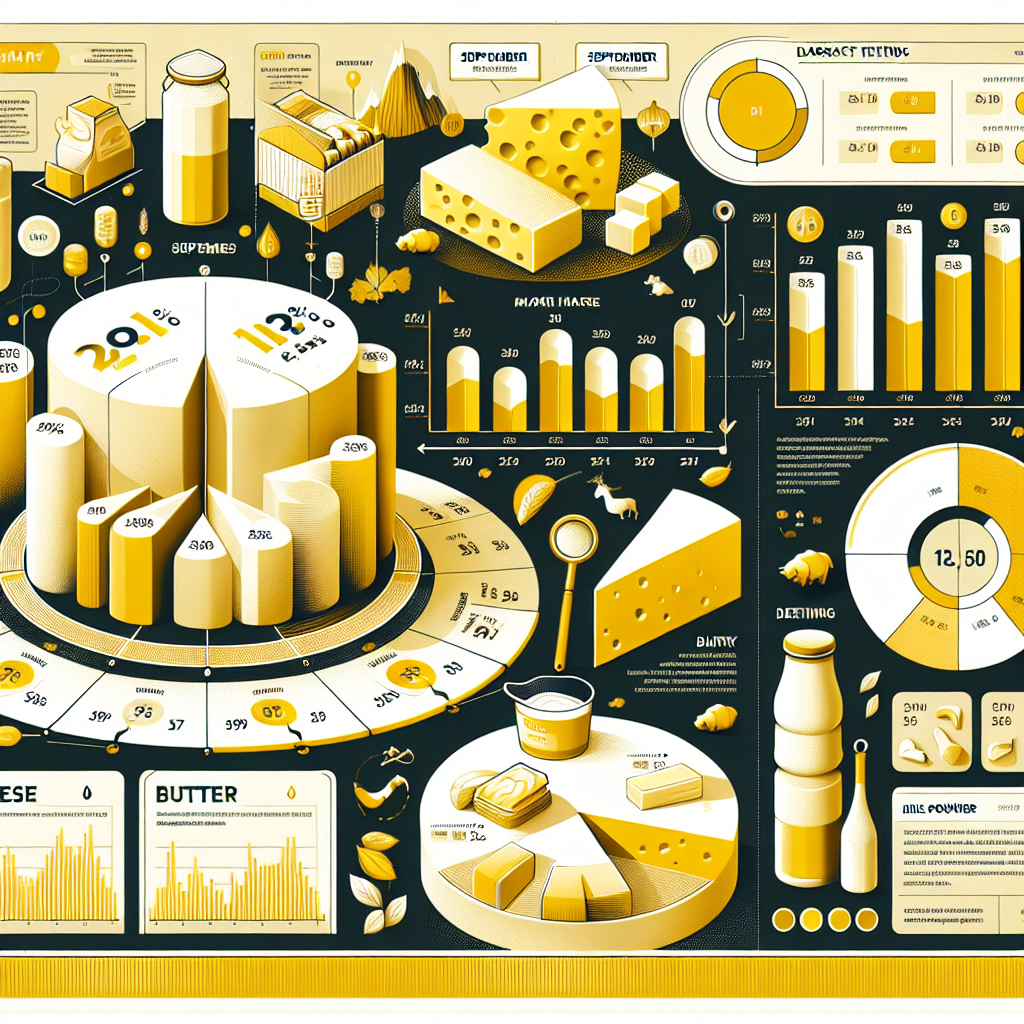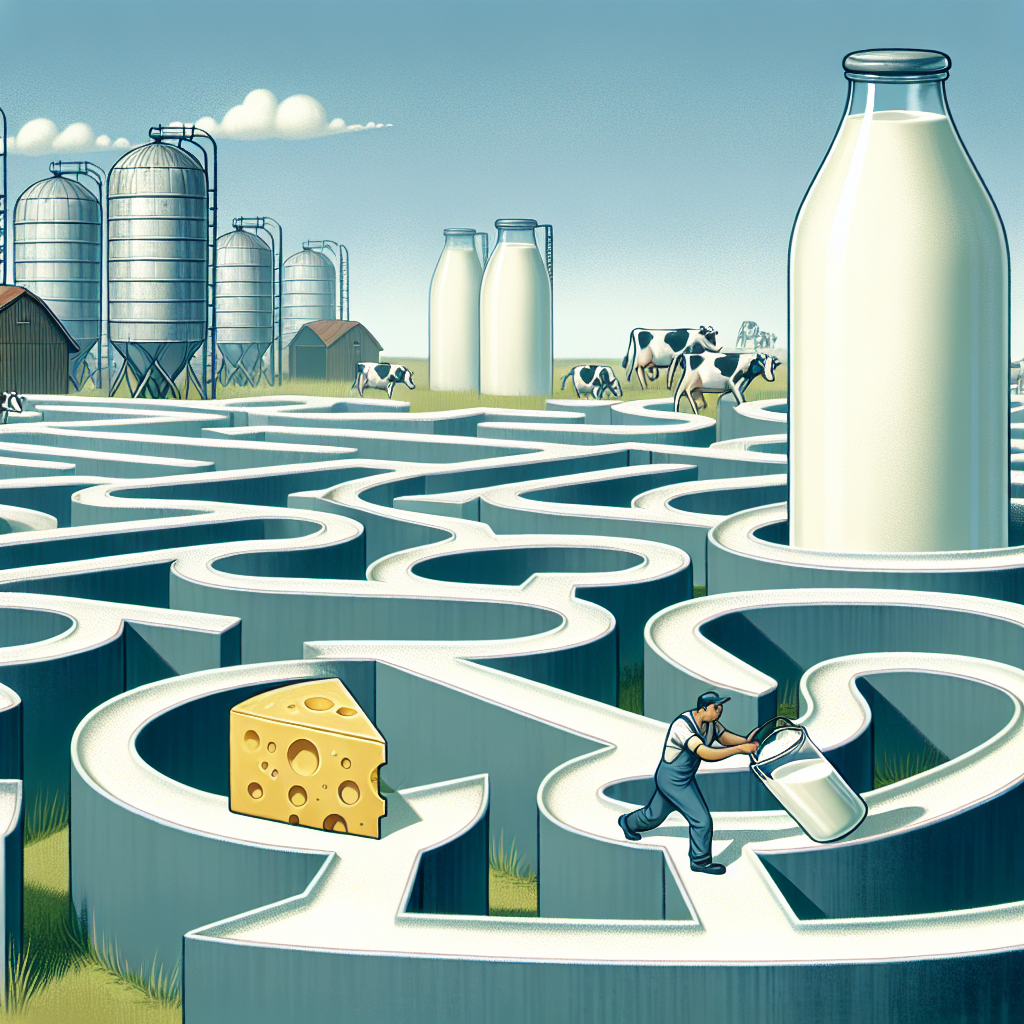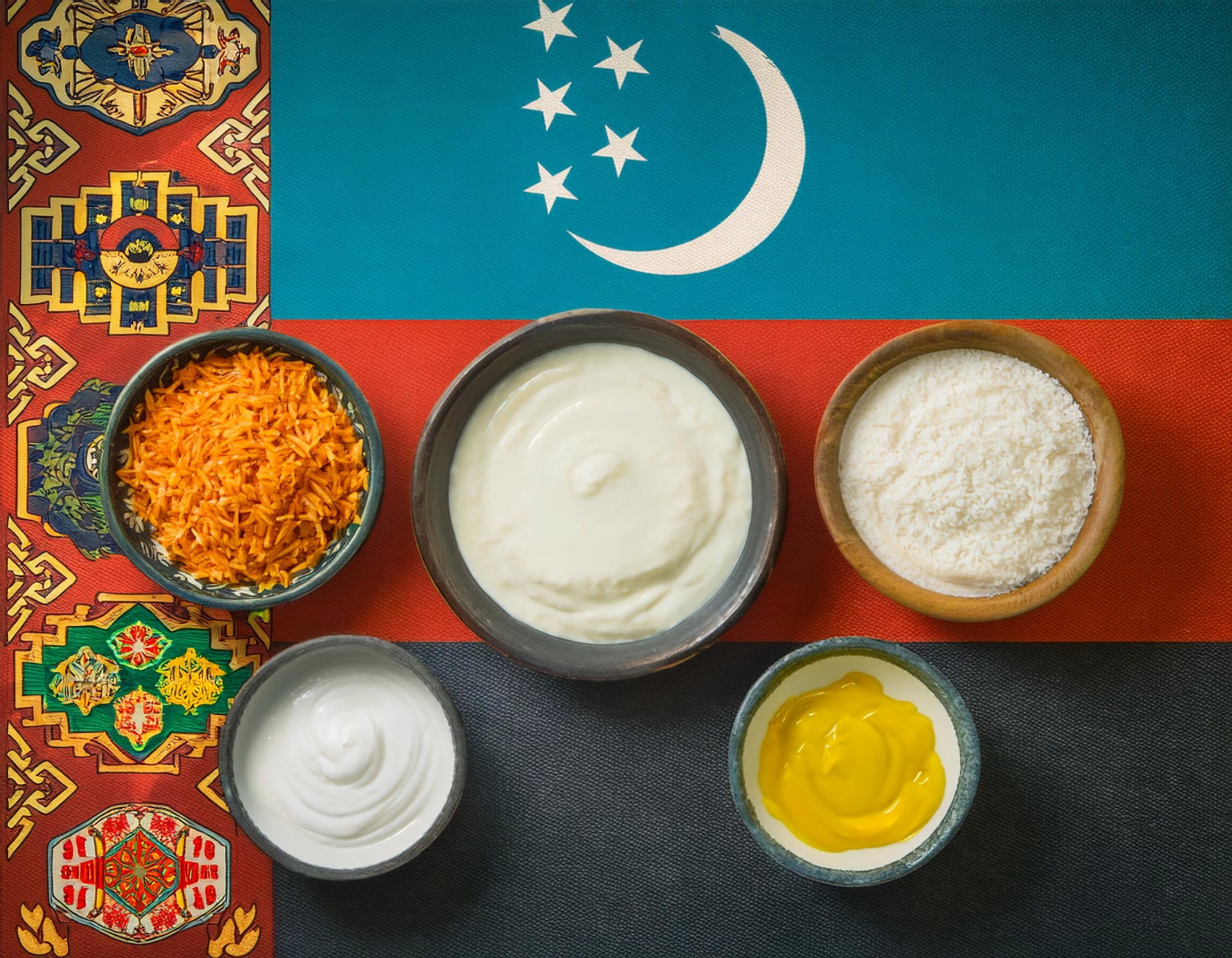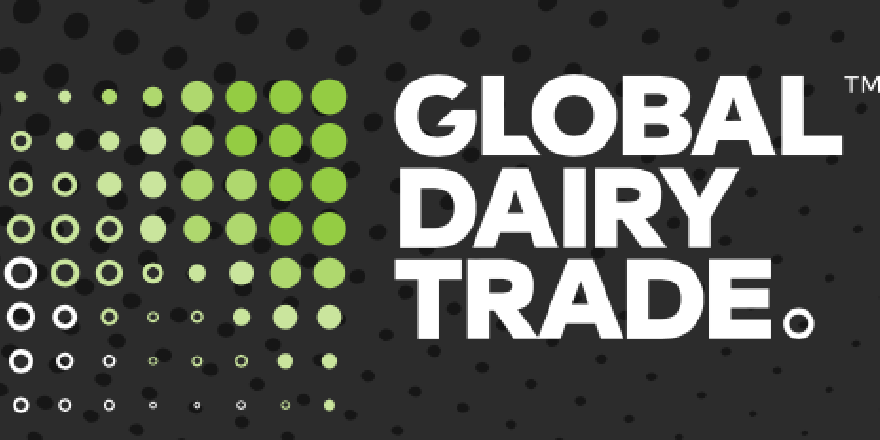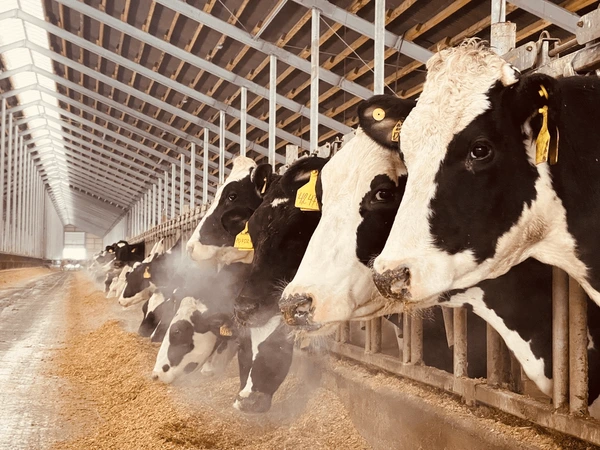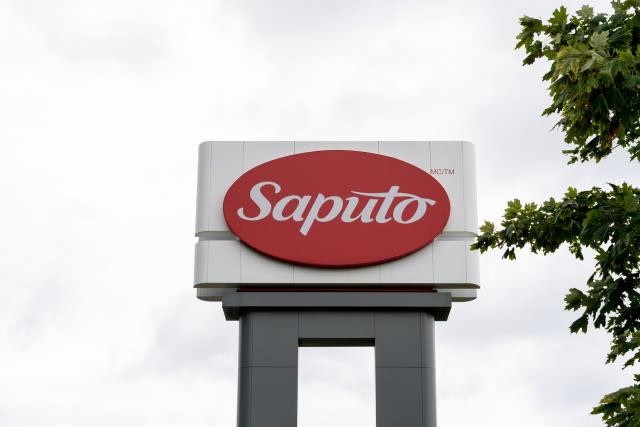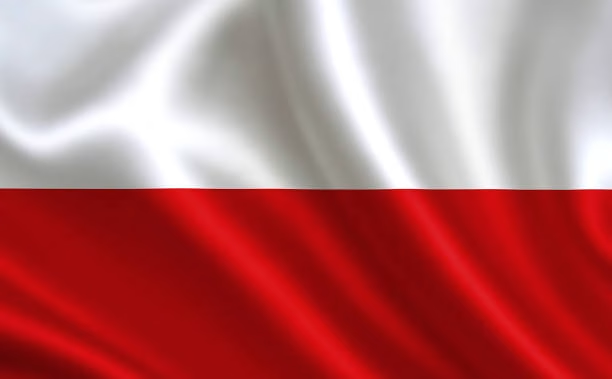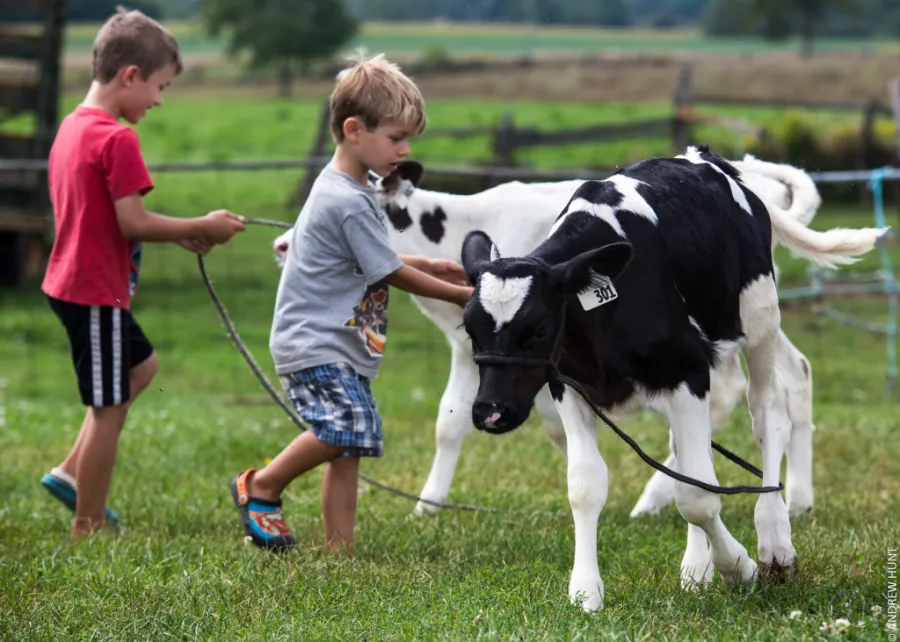Discover the tight 2024 race between Trump and Harris. Can swing states decide it? Expert insights and impacts on dairy farmers await.
Summary:
The 2024 presidential race between Donald Trump and Kamala Harris is intensely unpredictable, described as a “pure toss-up,” with Trump holding a slight edge at 51.5%. The decisive battlegrounds of Georgia, North Carolina, Pennsylvania, Wisconsin, Michigan, Arizona, and Nevada are pivotal. Both candidates present contrasting policies with significant implications for industries, including agriculture, and potential global economic ramifications, especially concerning China. Trump’s fiery rhetoric contrasts with Harris’s unifying discourse as they campaign vigorously. Control of Congress also adds tension to the election landscape, making the outcome uncertain and impactful beyond U.S. borders.
Key Takeaways:
- The 2024 presidential race remains highly competitive, with analysts labeling it a “pure toss-up” due to the narrow polling margins between Trump and Harris.
- David Wasserman notes Trump’s recent inflammatory statements have tightened the race, although he remains a slight favorite.
- Polling data from crucial swing states will be critical indicators of which party may prevail, emphasizing the importance of North Carolina and Georgia.
- Both candidates actively engage voters in critical regions, with Harris focusing on unity and Trump rallying his base provocatively.
- The election’s outcome could substantially impact economic policies, influencing factors like corporate tax rates and tariffs, affecting dairy industry markets and consumer prices.
- Overseas American voters have gained attention in the tight race due to low past voter turnout, making their participation potentially significant.
- Security measures in Washington, D.C., are heightened in anticipation of potential post-election unrest, with businesses preparing for disruption.
- Market indicators like the dollar index and stock futures reflect investors’ reactions to potential election outcomes, highlighting economic uncertainties.
- Control of the U.S. Senate is contentious, with Republicans favored, but possible Democratic victories could alter this dynamic.

The clock is ticking down to one of the most unpredictable elections in U.S. history, with the 2024 presidential race a true ‘pure toss-up,’ as former President Donald Trump and Vice President Kamala Harris are locked in a battle that could tip either way. This razor-thin contest does more than determine the next leader of the free world; it holds critical implications for sectors like dairy farming, which are at stake. Policy decisions made in the days and years ahead will ripple through marketplaces to the very land where dairy farmers labor each day. From trade policies affecting exports to potential environmental regulations, the outcome of this election could change the landscape in which you operate. As elections have consequences stretching beyond immediate politics and into America’s heartland, understanding the nuances of these policies isn’t just important—it’s essential.
Polling Paradox: The 2024 Presidential Race Balancing on a Knife’s Edge
The current polling landscape for the 2024 presidential race presents an intriguing picture of a contest teetering on the edge of unpredictability. In his razor-thin forecast, renowned analyst Nate Silver assigns only a marginal advantage to former President Donald Trump, with a 51.5% likelihood of clinching the Electoral College, versus Vice President Kamala Harris at 48.1%. Similarly, David Wasserman of the Cook Political Report underscores this tenuous balance, acknowledging how recent missteps by Trump have tightened what once seemed to be his advantage.
Adding to the complexity, the latest Des Moines Register poll findings have injected a jolt into the political betting markets. It revealed a surprising three-point lead for Harris in a state that many had presumed favored Trump. This unexpected turn has roiled market expectations, triggering a visible shift in prediction platforms such as Polymarket. Just days ago, Trump’s odds peaked at 67% as of Wednesday, yet they tumbled to 58% following the poll’s release, illustrating the market’s sensitivity to new data.
The fluctuating odds and volatile market responses signal an election far from decided. Silver and Wasserman’s analyses reflect that the voters’ leanings in crucial swing states remain fluid, and even minor developments could tip the scales as election day approaches. The battleground states are poised to play a decisive role, and both campaign teams will likely intensify their efforts to sway those still contemplating their choice.
The Decisive Seven: Swing States that Could Swing the Nation
The 2024 presidential election hinges on the outcomes in seven pivotal swing states: Georgia, North Carolina, Pennsylvania, Wisconsin, Michigan, Arizona, and Nevada. These states collectively hold the power to shape the electoral landscape due to their history of fluctuating political allegiances and diverse voter demographics. Both Trump and Harris strategize heavily on these battlegrounds, aware that winning a majority here could tip the scales decisively.
Georgia and North Carolina emerge as particularly significant. Both states, representing the broader Sun Belt region, carry substantial electoral votes that can influence the overall outcome. Early results from these states offer crucial insights into the evening’s direction. A strong performance by Trump here might signal an underestimation of his support in other battleground states, prompting a reevaluation of Harris’s prospects. Conversely, if Harris gains ground or secures victories in these states, it could indicate a shift toward Democratic favor, reflecting changing demographics and increasing urbanization.
In contrast, the Rust Belt states of Pennsylvania, Wisconsin, and Michigan are essential for building a winning coalition, given their significant electoral votes. Historically known for their swing nature, these states are critical for either candidate’s path to 270 electoral votes. A sweep by Harris in this region could effectively counterbalance Trump’s potential gains in the Sun Belt, reaffirming the Democratic hold on these vital industrial areas.
Meanwhile, Arizona and Nevada augment their critical roles, emerging as bellwether states due to their growing and diversifying populations. Close attention to their outcomes is warranted, as victories here could serve as early warnings or confirmations of national trends.
Ultimately, the intersection of these seven states encapsulates the election’s essence—a contest not solely of national prominence but of strategic victories within specific state borders. As results unfold on election night, all eyes will follow North Carolina and Georgia, serving as the initial barometers of either candidate’s electoral strength and the night’s overarching narrative.
Quiet Undercurrents: Overseas Americans Could Tip the Scale
The influence of overseas American voters often resembles an undercurrent, quietly weaving beneath the surface of more overt election forces. Numbering over 4 million, their potential impact is significant even as turnout historically hovers around 7.8%. Recognizing this untapped reservoir, both parties have intensified efforts to mobilize these voters, emphasizing digital outreach and localized campaign strategies.
Foreign policy stands out as a resonant chord in this outreach, as those living abroad keenly feel the repercussions of U.S. strategies on international diplomacy, trade agreements, and military presence. These issues are abstract concepts and factors directly influencing their daily lives in host countries.
Another pivotal issue is the taxation framework applied to expatriates. The dual-tax system, often called “double taxation,” remains a rare point of bipartisan interest. Overseas Americans face the unique burden of filing taxes in both the U.S. and their country of residence, a situation both Democrats and Republicans are capitalizing on to sway this voter demographic.
For Republicans, Trump’s pledge to alleviate overseas tax filing burdens offers a point of attraction, potentially drawing in those frustrated by current regulations. Meanwhile, Democrats are highlighting broader foreign policy stances that emphasize international cooperation, seeking to appeal to progressive values among expatriates. As these efforts unfold, the overseas vote emerges as a compelling wildcard, a demographic whose impact on the tight 2024 presidential race is yet to be fully realized.
Contrasting Campaign Chronicles: Trump’s Fiery Fervor vs. Harris’s Harmonious Hope
In the feverish run-up to Election Day, the campaign trails of Donald Trump and Kamala Harris offer a striking study in contrasts. Both camps are laser-focused on the pivotal swing states that could ultimately decide the presidency. Trump storms key battlegrounds with fervor, utilizing an aggressive rhetoric that seeks to energize and mobilize his base. His campaign rallies resonate with fiery critiques of his opponents and evocative declarations aimed at reigniting the fervor of past victories. His speeches in crucial states like Pennsylvania and Michigan are marked by combative tones and controversial claims, reflecting his strategy to dominate the narrative and seize the spotlight through bold proclamations and media-baiting tactics.
Conversely, Kamala Harris charts a different course. Her campaign strategy zeroes in on uniting a divided electorate. As she graces the stages in Michigan and Pennsylvania, her addresses weave a narrative of hope and reconciliation. Harris endeavors to transcend partisan divides by focusing on positive, uplifting discourse. Her message offers a distinct alternative to Trump’s approach — reaching out to independents and disillusioned conservatives, promising a future anchored in cooperation and empathy.
Both candidates understand the stakes in these final days, yet their paths diverge in method and tone. Where Trump’s approach rides on confrontation and stark contrasts, Harris’s is a call to collective action and harmony. These varying strategies reflect broader themes each candidate hopes will resonate with voters in the crucible of the swing states, ultimately proving decisive in shaping the outcome of this tightly contested race.
Financial Fortunes and Dairy Dilemmas: The 2024 Election’s Economic Impact
The unfolding 2024 presidential election holds significant implications for financial markets and economic policies. Each candidate’s victory likely will dictate divergent trajectories for the U.S. economy. The equity and bond markets are keenly poised, anticipating either Kamala Harris or Donald Trump shaping interest rate decisions and broader fiscal policies.
Financial Markets and Interest Rates: Should Trump reclaim the presidency, markets might expect a continuation or enhancement of pro-business, low-tax policies, potentially buoying corporate earnings and investor sentiment. However, Trump’s aggressive stance on tariffs, mainly targeting China, could ignite global trade tensions. Such measures might induce market volatility, forcing the Fed to reassess its rate policy paths, possibly stalling or reversing rate-cutting plans.
Conversely, a Harris administration would likely prioritize environmental and social governance, balanced federal spending, and increased taxes on corporations and high-income earners. This may result in initial market pressure, as investors anticipate lower profit margins dampening stock valuations. However, Harris’ approach to stabilizing foreign trade relationships might appeal to the bond market, with expectations of reduced global economic friction.
Impact on the Dairy Industry: The election results could usher in poignant outcomes for dairy farmers and related industries. Trump’s proposed tax cuts might translate into reduced operational costs for large agricultural enterprises, but his tariff policies could hike input prices for feed and equipment, affecting profitability. His stance on immigration could also impact labor supply, which is crucial for the dairy sector.
On the other hand, Harris’s tax policy aimed at higher-income brackets could prove challenging for large dairy operations falling within these thresholds. However, her push to combat price gouging and regulate market fluctuations could stabilize consumer costs. Harris’s infrastructure plans, including transportation improvements, could enhance supply chain efficiency, benefiting the dairy industry long-term.
The dairy sector is at an economic crossroads as election day draws near. Each candidate offers potential benefits and pitfalls, urging farmers to consider how these political shifts could ripple through their livelihoods.
Congressional Crossroads: The Power Struggle and Its Agricultural Fallout
As the 2024 election unfolds, the battle for control of Congress is as fiercely contested as the presidential race. The Senate landscape offers a possible shift in control favoring the Republicans, who are predicted to gain a majority. The Cook Political Report anticipates the GOP securing 51 to 54 seats, a shift that could dramatically alter legislative priorities. Such a majority could empower Republicans to advance their agenda more decisively, impacting everything from tax policy to regulatory approaches.
This potential shift poses significant implications for agricultural policies critical to dairy farmers. With a Republican majority, legislative efforts might swing towards deregulation, which could benefit the agriculture sector by reducing compliance costs. However, these changes might also mean less government intervention in agricultural subsidies, directly affecting farm income stability.
In contrast, the House races are more unpredictable. Described as a “jump ball,” both parties have plausible pathways to securing control. The competitive nature of these contests heightens their significance, as the House’s composition will critically influence the next administration’s legislative agenda. A Republican-controlled House paired with a Republican Senate would facilitate the passage of more conservative economic policies, potentially fostering a tax-friendly environment for businesses. On the other hand, a Democratic House could act as a check on conservative legislative initiatives, pushing for continued investment in environmental and infrastructure projects, which could benefit rural communities and farming operations.
The results will have far-reaching implications for the dairy industry stakeholders monitoring these dynamics. The congressional makeup will define policy directions affecting agricultural trade, environmental regulations, and farm support programs, which are crucial for strategic planning and long-term business viability.
Global Ripples: The World Holds Its Breath as the U.S. Election Approaches
As the 2024 U.S. presidential election looms, international stakeholders brace for its far-reaching effects. Particularly concerned is China, monitoring the race with heightened interest. The potential for the Trump administration’s steep tariffs on Chinese imports looms large, threatening to disrupt economic balances. This specter has catalyzed preemptive discussions within China’s legislative circles, where economic stimulus measures are actively being considered. The outcome of these deliberations could dictate China’s fiscal strategies, potentially recalibrating investment channels and trade policies to offset anticipated economic turbulence.
Further afield, global markets display a cautious stance, underscored by fluctuating indices as the possibility of policy shifts looms. While the Trump scenarios project a more tumultuous trade landscape, Kamala Harris’s focus on diplomacy could herald different international engagements. Yet, both campaigns leave little room for complacency among foreign governments, prompting preparatory adjustments to safeguard economic interests. As election day draws near, the world waits, watches, and strategizes, underscoring the global interconnectedness of political tides.
The Bottom Line
The final stretch of the 2024 presidential race underscores a landscape rife with uncertainty. With polls and prediction markets swaying like a pendulum, there is no clear frontrunner between Donald Trump and Kamala Harris. The implications for dairy farmers and stakeholders are vast—whether in taxation, international trade, or economic policies. As swing states play a pivotal role, their decision could dictate the presidency and the regulatory and economic environment that frames your day-to-day operations.
As the election nears, it’s crucial to ponder: how will either administration’s policies ripple through the dairy sector, affecting everything from pricing to international trade agreements? What strategies should you consider to safeguard and potentially capitalize on the shifts in the political landscape? The future of your business might hinge more than ever on the choices made at the ballot box.
Learn more:
- How the 2024 Presidential Election Could Reshape Agricultural Marketing Strategies
- Trump vs Biden: Who is the Best Presidential Choice for Dairy Farmers?
- Lawmakers Hopeful Yet Cautious: Future of the 2024 Farm Bill Hangs in the Balance
 Join the Revolution!
Join the Revolution!
Bullvine Daily is your essential e-zine for staying ahead in the dairy industry. With over 30,000 subscribers, we bring you the week’s top news, helping you manage tasks efficiently. Stay informed about milk production, tech adoption, and more, so you can concentrate on your dairy operations.







 Join the Revolution!
Join the Revolution!


